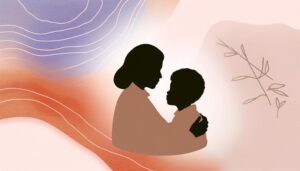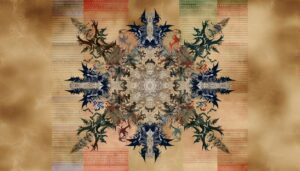5 Timeless Symbols Celebrating the Mother-Daughter Bond
Symbols for the mother-daughter bond resonate deeply within various cultures, often carrying significant ethnographic and historical meanings. The intertwined hearts symbolize mutual love and nurturing, found in ancient art and rites of passage.
The infinity symbol, originating from mathematical notation, represents eternal, unending support. Celtic knots embody perpetual interconnectedness and familial continuity.
Meanwhile, the Tree of Life reflects shared roots and individual growth. Yin and Yang emphasize relational balance and harmony.
Additionally, birthstone jewelry, tattoos, and Matryoshka dolls infuse personal and cultural heritage into these symbols, portraying an enduring legacy. These intriguing symbols offer much insight into familial bonds and traditions.
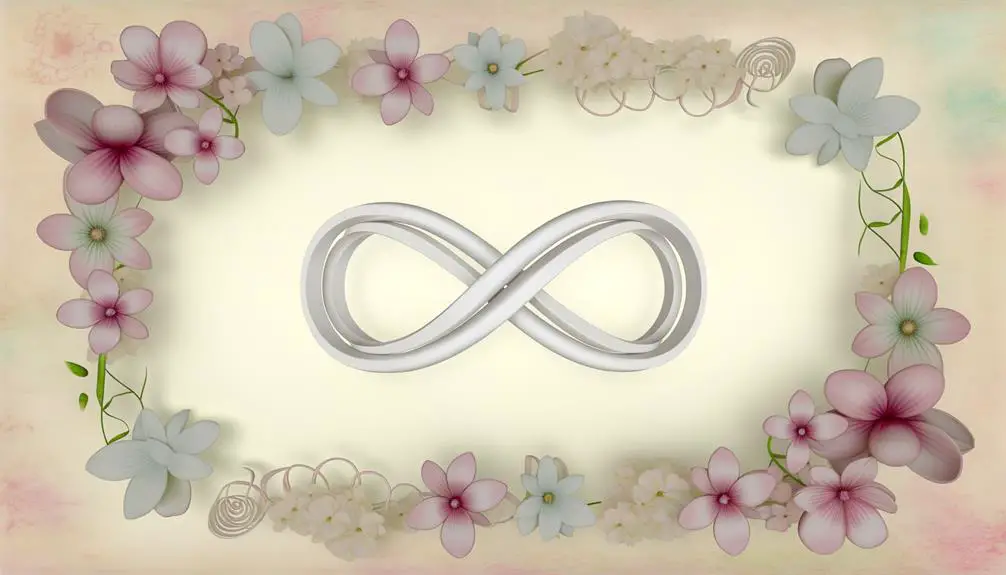
Key Takeaways
- Intertwined hearts symbolize the profound and nurturing bond between mother and daughter.
- The infinity symbol represents the unending and eternal love shared between mother and daughter.
- The Celtic knot embodies the enduring, cyclical nature and interconnectedness of mother-daughter relationships.
- The Tree of Life signifies mutual support, shared roots, and individual growth within the mother-daughter bond.
- Yin and Yang emphasize the balance and complementary roles within the harmonious mother-daughter relationship.
Intertwined Hearts

The symbol of intertwined hearts, often utilized to represent the bond between mother and daughter, carries profound ethnographic significance and is deeply embedded in various cultural traditions.
Historically, these linked hearts have been found in ancient art and textiles, signifying familial unity and love. In many societies, this motif is used in rites of passage, such as naming ceremonies and weddings, to emphasize the enduring connection between maternal figures and their offspring.
The intertwining of two hearts serves as a visual metaphor for the inseparable nature of this relationship, transcending geographical and cultural boundaries. By invoking this symbol, cultures around the world acknowledge the unbreakable and nurturing nature of the mother-daughter bond, reinforcing its importance in communal and familial structures.
Infinity Symbol
Beyond the intertwined hearts, another potent emblem for the mother-daughter relationship is the infinity symbol, which encapsulates the concept of an eternal and unending bond. Originating from mathematical notation, the infinity symbol has transcended its numerical roots to embody perpetual connections in various cultural contexts.
Its looping, continuous form represents a bond that withstands the test of time, symbolizing an enduring love that evolves yet remains unbroken. Ethnographically, the infinity symbol has been embraced in diverse traditions to denote infinite possibilities and eternal ties.
In mother-daughter relationships, it signifies the timeless, boundless love and mutual support that characterizes this unique bond. The symbol's simplicity and elegance make it a universal motif for expressing everlasting devotion.
Celtic Knot
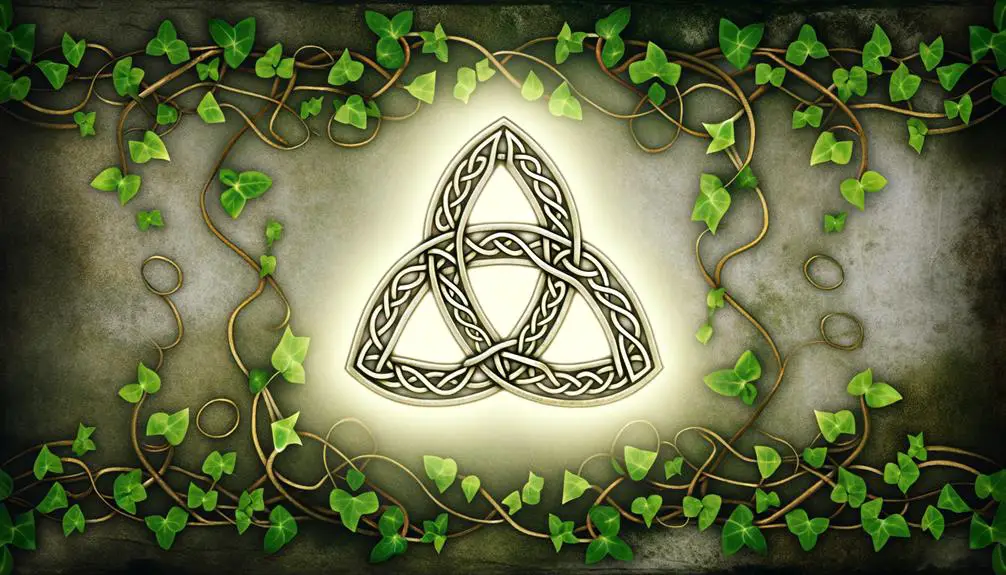
The Celtic Knot, with its intricate interwoven design, embodies the concept of an eternal bond, making it an evocative symbol for the mother-daughter relationship.
This ancient motif, prevalent in Celtic art and culture, represents the interconnectedness of life and the unbreakable ties that bind generations.
The endless loops of the knot underscore a perpetual connection, signifying the enduring and cyclical nature of familial love.
Eternal Bond Symbolism
Rooted deeply in Celtic culture, the intricate design of the Celtic knot serves as a poignant symbol of the eternal bond between mother and daughter, reflecting an unbreakable connection that transcends time and space. This ancient motif, devoid of a beginning or end, encapsulates continuity and the cyclical nature of life. Embedded in its loops and interweaving paths is a rich tapestry of meaning.
- Historical Significance: Used in ancient manuscripts and stone carvings, the knot symbolizes eternity and interconnectedness.
- Cultural Context: The knot's infinite loops resonate with the Celtic belief in the interconnectedness of life and nature.
- Ethnographic Insight: Passed down through generations, these symbols reinforce familial ties and cultural heritage, celebrating the enduring love between mother and daughter.
Interwoven Design Meaning
While the Celtic knot poignantly symbolizes the eternal bond between mother and daughter, its interwoven design further deepens the narrative by representing the complexities and multifaceted nature of their relationship.
The continuous loops signify an unbroken connection, reflecting cultural values of unity and continuity. Each twist and turn within the knot mirrors life's unpredictable pathways and the intricate emotional tapestry woven through shared experiences.
Ethnographically, the Celtic knot's origins in ancient Celtic art underscore its role as a symbol of interconnectedness, extending beyond mere familial ties to encompass a broader spiritual and cultural context. This profound emblem encapsulates the enduring, yet evolving, dynamics between mother and daughter, highlighting the balance of independence and interdependence integral to their bond.
Tree of Life
In many cultures, the Tree of Life stands as a profound symbol representing the interconnectedness of mother and daughter, embodying their shared roots, growth, and enduring bond.
This emblematic tree's roots signify the family's shared history and heritage, grounding the relationship in a rich cultural context.
The trunk represents the mutual support and strength between mother and daughter, a pillar that withstands life's challenges.
Finally, the branches and leaves symbolize the diverse paths and individual growth each undertakes, yet always remaining connected.
- Roots: Representing ancestral lineage and shared heritage.
- Trunk: Symbolizing mutual support, resilience, and strength.
- Branches and Leaves: Denoting individual growth, diverse paths, yet enduring connection.
This nuanced symbol encapsulates the multifaceted and enduring nature of the mother-daughter relationship.
Yin and Yang
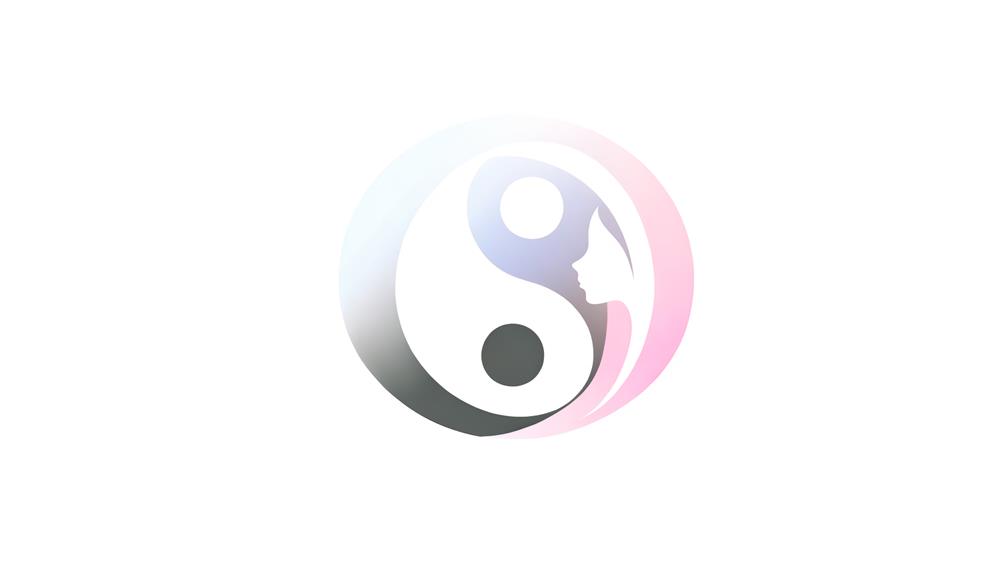
The concept of Yin and Yang, deeply rooted in Chinese philosophy, offers profound insights into the mother-daughter relationship by emphasizing balance in relationships, complementary opposites, and harmonious unity.
Within this framework, the dynamic interplay between maternal nurturing (Yin) and filial assertiveness (Yang) creates a holistic bond that transcends mere biological connection.
This cultural paradigm highlights how the intrinsic differences between mother and daughter can synergistically contribute to a balanced and unified familial harmony.
Balance in Relationships
Understanding the intricate balance in mother-daughter relationships often requires delving into the ancient Chinese philosophy of Yin and Yang, which symbolizes the interconnectedness and interdependence of opposites. This balance is essential for nurturing a harmonious relationship that fosters mutual respect and growth.
Ethnographic insights reveal that:
- Emotional Reciprocity: Both mother and daughter must engage in a dynamic exchange of emotional support and understanding, reflecting Yin and Yang's fluidity.
- Role Adaptation: Each party needs to adapt their roles over time, acknowledging the evolving needs and boundaries, thereby maintaining equilibrium.
- Cultural Context: Cultural norms and values greatly influence these relationships, dictating behaviors and expectations that must be balanced delicately.
This nuanced understanding underscores the importance of maintaining relational harmony.
Complementary Opposites
Exploring the concept of complementary opposites within the Yin and Yang framework reveals profound insights into the dynamic interplay between mothers and daughters, highlighting how their differences can enhance relational harmony. Yin, often associated with nurturing, intuition, and receptiveness, aligns with traditional maternal roles.
Conversely, Yang symbolizes assertiveness, logic, and outward energy, traits frequently embodied by daughters, especially in contemporary contexts. Ethnographic studies illustrate how these opposing yet complementary forces can foster mutual growth and understanding.
For instance, in various cultures, the maternal Yin provides a stabilizing force, while the daughter's Yang injects innovation and dynamism into the relationship. This nuanced balance underscores a symbiotic relationship that thrives on the interplay of divergent yet harmonious energies.
Harmonious Unity
Building upon the dynamic interplay between complementary opposites, harmonious unity in the Yin and Yang framework reveals how the integration of maternal and daughterly energies can create a balanced and cohesive relational dynamic.
This unity is not merely symbolic but deeply rooted in cultural traditions and ethnographic contexts, emphasizing the importance of symbiotic relationships.
- Cultural Significance: Many cultures view the mother-daughter bond as a microcosm of broader social harmony, reflecting communal values.
- Ethnographic Insights: Anthropological studies show that this relationship often serves as a stabilizing force within families and communities.
- Intergenerational Learning: Through shared experiences, mothers and daughters transmit wisdom and reinforce their interconnected roles, fostering mutual growth.
Such an understanding enriches our perception of familial ties and societal balance.
Birthstone Jewelry
Birthstone jewelry, deeply entrenched in cultural traditions and personal significance, serves as a timeless symbol of identity and heritage for mothers and daughters. Each gemstone is imbued with unique meanings and historical connotations, reflecting the month of birth and offering a personalized touch that strengthens familial bonds.
Ethnographic studies reveal that birthstone jewelry often acts as a generational heirloom, passed down as a tangible representation of lineage and legacy. The practice transcends mere adornment, becoming a conduit for emotional connection and cultural continuity.
In various cultures, the choice and exchange of such jewelry are rituals signifying protection, luck, and well-being, thereby embedding birthstone jewelry deeply within the social fabric of familial relationships.
Mother-Daughter Tattoos
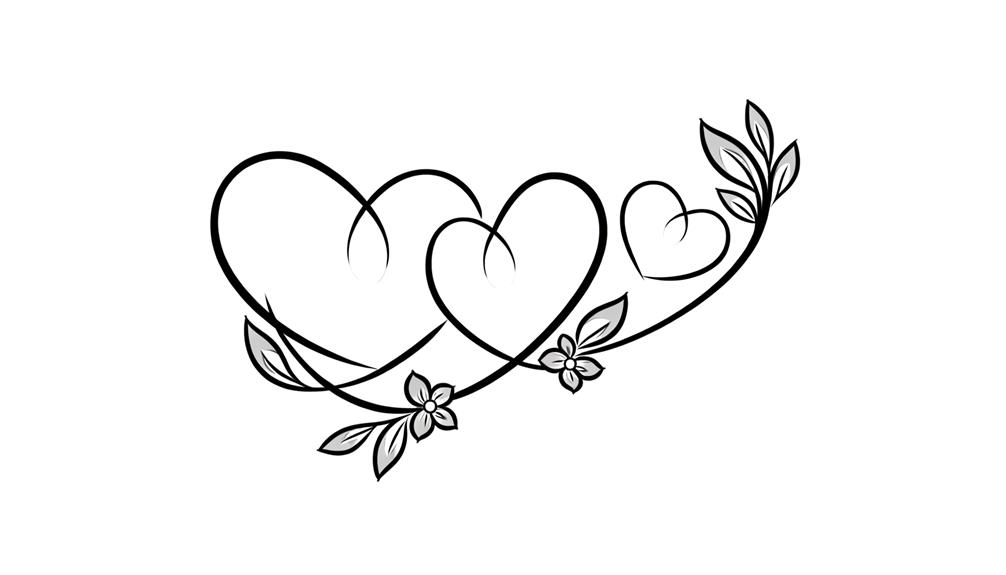
Mother-daughter tattoos, as a form of permanent body art, encapsulate the profound emotional and cultural significance of the maternal bond while serving as enduring symbols of shared identity and mutual affection. These tattoos often draw from a rich tapestry of personal and cultural motifs, reflecting the unique narratives and shared experiences of the individuals involved.
The act of getting a tattoo together can itself be a ritualistic experience, deepening the emotional connection.
- Symbolic Designs: Common themes include hearts, infinity signs, and matching flora, each representing aspects of love, eternity, and growth.
- Cultural Variations: In different cultures, motifs such as Celtic knots or traditional tribal patterns can signify heritage and lineage.
- Generational Impact: These tattoos can serve as a legacy, symbolizing generational continuity and familial unity.
Matryoshka Dolls
Rooted in Russian folk art, Matryoshka dolls, also known as nesting dolls, serve as a compelling symbol of the mother-daughter relationship, encapsulating themes of unity, continuity, and generational wisdom within their intricately painted, nested forms.
Each doll, nestled within another, represents a lineage that transcends time, embodying the maternal connection and heritage passed down through generations. The meticulous craftsmanship and vibrant designs not only highlight cultural artistry but also signify the layered complexity of familial bonds.
In ethnographic terms, Matryoshka dolls provide a tangible representation of the cyclical nature of life, where each generation is both distinct and interconnected. This cultural artifact invites a deeper appreciation of the enduring legacy inherent in the mother-daughter dynamic.
Conclusion
The symbols representing mother and daughter relationships encapsulate profound cultural and emotional significance.
Intertwined hearts, the infinity symbol, Celtic knots, the Tree of Life, Yin and Yang, birthstone jewelry, mother-daughter tattoos, and Matryoshka dolls each offer unique insights into these bonds.
These symbols, rich in ethnographic context, transcend mere ornamentation to become heirlooms of intergenerational connection.
Analogous to a telegram, these symbols deliver succinct yet deeply meaningful messages, affirming the enduring and multifaceted nature of maternal relationships across cultures.

